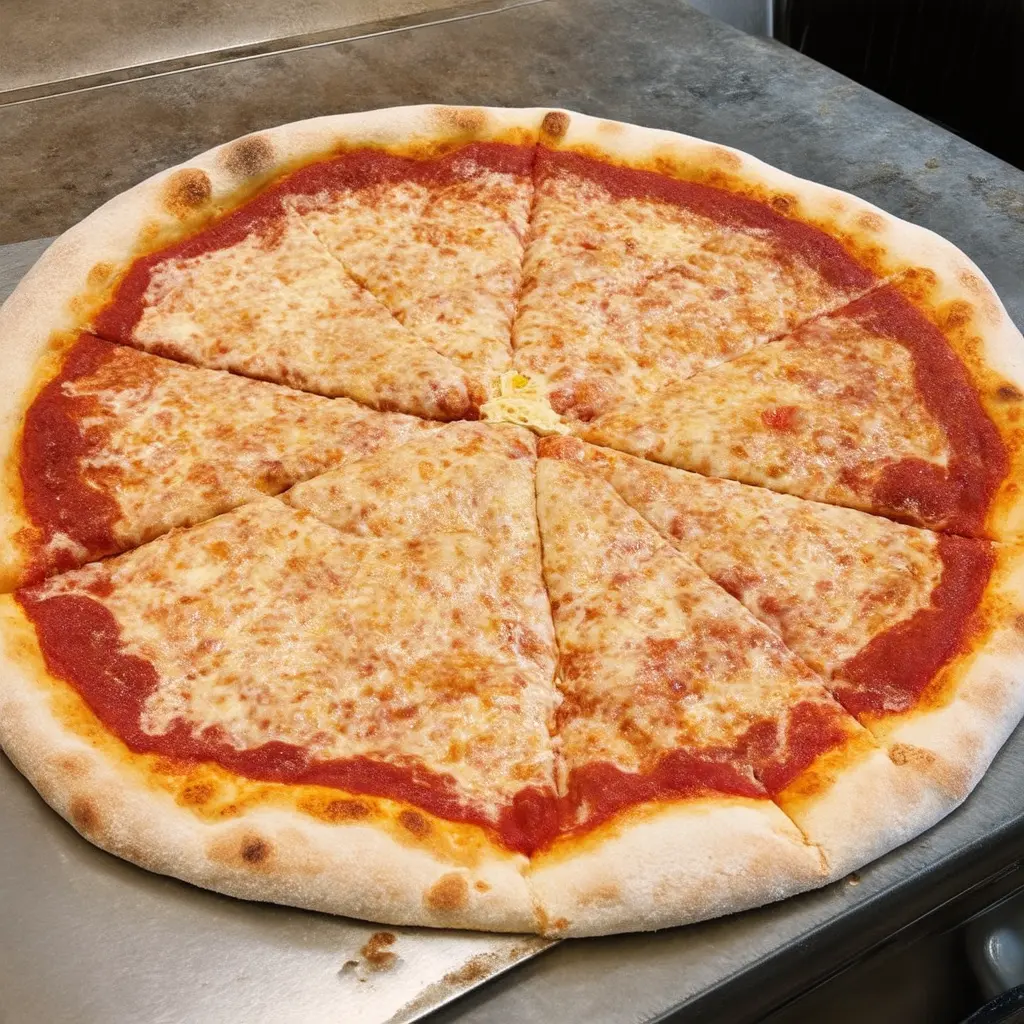
If you’re craving the perfect homemade pizza, knowing the exact “14-inch pizza dough weight medium crust recipe” is essential for success. A well-balanced crust can make all the difference in bringing your favorite toppings to life while maintaining that satisfying crunch and chew. Let’s dive into the details of crafting a delicious, medium-crust pizza, starting from the perfect dough weight all the way to baking it to perfection.
Pizza making is a blend of art and science, where every detail counts, from the ingredients to the techniques. This guide will take you through the comprehensive process of making the perfect pizza dough for a 14-inch medium crust pizza, ensuring that your homemade creation rivals your favorite pizzeria. We’ll cover everything you need to know, from the ingredients and preparation methods to the best tools and tips for success. By the end of this article, you’ll be ready to make a mouthwatering pizza that brings together a golden, crispy edge and a soft, chewy center.
What is the Ideal Dough Weight for a 14-Inch Medium Crust Pizza?
Understanding the Dough Weight
For a 14-inch pizza with a medium crust, getting the right dough weight is crucial to achieving the perfect balance between soft and crunchy. Typically, you need about 14-16 ounces (400-450 grams) of dough to achieve a medium-thickness crust. This weight ensures a balance between a thin and thick crust, giving you a crispy edge and a soft, chewy middle.
Using the right amount of dough means that the crust will have a uniform texture, which is essential for the best eating experience. With too much dough, the crust becomes overly thick and doesn’t bake evenly, resulting in a doughy texture. Conversely, too little dough can make the crust too thin and lead to an excessively crunchy or even burnt pizza.
Why Does Dough Weight Matter?
The weight of your dough directly affects the texture, cooking time, and overall quality of your pizza. Too light, and you might end up with a cracker-like texture, while too heavy a dough can leave your crust undercooked in the center. Getting the right dough weight is also important for ensuring that the dough stretches to a consistent thickness throughout, avoiding any thin spots that could tear during baking or thick areas that don’t bake thoroughly.
Dough weight also impacts how well your pizza handles toppings. With a medium crust, you get the best of both worlds—enough thickness to support toppings without being overly doughy. The key is to strike a balance where the base is sturdy but not the star of the show; instead, it allows your favorite toppings to shine.
Ingredients for the 14-Inch Pizza Dough Recipe
To make the perfect dough for a 14-inch medium crust pizza, here’s what you’ll need:
- 3 1/4 cups (400 grams) all-purpose flour: The main structure of your dough, providing the base for the crust.
- 1 cup (240 ml) warm water: Helps activate the yeast and forms the dough.
- 1 packet (7 grams) active dry yeast: Leavens the dough, making it rise and become airy.
- 1 tablespoon olive oil: Adds richness and helps to tenderize the dough, contributing to flavor and texture.
- 1 teaspoon sugar: Feeds the yeast, helping it to activate and create a rise.
- 1 teaspoon salt: Enhances flavor and strengthens the gluten structure.
Optional Ingredients for Flavor
- Garlic powder for added taste
- Italian herbs like oregano or basil for extra aroma and flavor that bring an authentic pizzeria touch to your crust.
These optional ingredients allow you to customize the taste of your pizza crust to suit your preference. For those who love an extra punch of flavor, adding herbs and garlic to the dough can make a huge difference, giving your homemade pizza an artisanal quality.
Step-by-Step Instructions for Making the Dough
Step 1: Activate the Yeast
In a small bowl, combine warm water (about 110°F or 45°C) with the sugar and yeast. Stir and let it sit for about 5-10 minutes, until it becomes frothy. This step helps activate the yeast, ensuring a nice rise for your dough.
The yeast should start to foam and create bubbles on the surface, indicating that it’s alive and ready to work. If the mixture doesn’t foam, your yeast may be inactive or the water temperature may have been too hot or too cold, in which case you should start over.
Step 2: Mix the Ingredients
In a large mixing bowl, combine the flour and salt. Make a well in the center, and add the yeast mixture and olive oil. Stir until the dough starts coming together.
Once mixed, you should have a sticky but cohesive mass of dough. This is the beginning stage, and it’s normal for the dough to be a bit messy. Use a wooden spoon or a dough scraper to help incorporate all the ingredients thoroughly.
Step 3: Knead the Dough
Transfer the dough onto a lightly floured surface and knead for about 8-10 minutes, until it becomes smooth and elastic. Kneading helps develop the gluten, which is essential for that chewy texture.
Kneading involves pressing the dough down and away with the heel of your hand, then folding it over and repeating the process. You should notice the dough transitioning from a rough, shaggy texture to a smooth, slightly tacky ball. Proper gluten development is key to achieving a crust that has just the right amount of chewiness.
Step 4: First Rise
Place the kneaded dough in a lightly oiled bowl, cover it with a damp cloth, and let it rise for about 1-1.5 hours, or until it has doubled in size.
Rising in a warm, draft-free environment allows the yeast to work, creating gas bubbles that expand the dough. This process develops flavor and ensures a light, airy crust once baked.
Step 5: Shaping the Dough for a 14-Inch Pizza
Once the dough has risen, punch it down to release any air bubbles. Turn it onto a floured surface and shape it into a 14-inch circle. You can use a rolling pin or stretch it by hand. Make sure to keep the thickness even throughout to ensure even cooking.
When shaping by hand, start in the middle and work your way outward, rotating the dough to maintain a circular shape. The goal is to create an even crust that is neither too thin nor too thick, perfect for supporting toppings while maintaining that delightful balance between chewiness and crispiness.
Step 6: Second Rest (Optional)
For extra flavor and a slightly more airy crust, let the shaped dough rest for another 10-15 minutes before adding your toppings. This rest period allows the gluten to relax, making the dough easier to handle and less likely to spring back when topped.
Tips for the Perfect Medium Crust Pizza
Use a Pizza Stone
A pizza stone helps distribute heat evenly and absorbs moisture, resulting in a perfectly crispy crust. Preheat the stone in your oven for at least 30 minutes at 475°F (245°C) before baking your pizza.
The high temperature and even heat of a pizza stone replicate the conditions of a professional pizza oven. This method also prevents soggy bottoms, ensuring a crunchy bite every time.
Don’t Overload on Toppings
While it’s tempting to pile on all your favorite ingredients, too many toppings can make the pizza soggy. For a medium crust, less is more to keep the dough from becoming too heavy.
Stick to a balance of sauce, cheese, and no more than three or four toppings to ensure even cooking. Remember, part of the charm of pizza is the harmony of all the components—crust, sauce, cheese, and toppings.
Pre-Bake the Crust (Optional)
For extra assurance that your crust won’t end up undercooked, consider pre-baking the dough for 3-4 minutes before adding your toppings.
This technique is especially helpful if you’re using toppings with high moisture content, such as fresh tomatoes or mushrooms, which can make the crust soggy during baking.
FAQs About Making a 14-Inch Medium Crust Pizza
Q: How Long Should I Bake a 14-Inch Medium Crust Pizza?
A: Bake your 14-inch pizza at 475°F (245°C) for about 12-15 minutes, or until the crust is golden and the cheese is bubbly. Keep an eye on it to avoid overcooking.
Rotating the pizza halfway through the baking time can help ensure even cooking, especially if your oven has hot spots.
Q: Can I Freeze the Dough?
A: Yes, you can freeze the dough! After the first rise, divide it into portions, wrap it tightly in plastic wrap, and store it in the freezer for up to 3 months. Let it thaw in the refrigerator overnight before using.
Freezing dough is a great way to have homemade pizza at your fingertips whenever a craving strikes. Just make sure to let it thaw completely before shaping and baking.
Q: What If I Don’t Have a Pizza Stone?
A: You can use a regular baking sheet turned upside down as an alternative. Just be sure to preheat it as you would a pizza stone to get similar results.
Preheating a baking sheet helps create that initial burst of heat, similar to a pizza stone, which is crucial for a crispy crust.
Q: How Do I Get a Chewy Crust?
A: For a chewier crust, use high-protein flour like bread flour instead of all-purpose flour. It has more gluten, which contributes to a chewier texture.
Bread flour has a higher gluten content, which is the key to achieving that characteristic chewy bite that many pizza lovers prefer. It also helps the dough hold up better under toppings.
Toppings Suggestions for a 14-Inch Medium Crust Pizza
Classic Margherita
- Tomato sauce
- Fresh mozzarella
- Basil leaves
- Olive oil drizzle
The classic Margherita is simple yet delicious, allowing the flavor of the dough, sauce, and cheese to shine.
Pepperoni Delight
- Tomato sauce
- Mozzarella cheese
- Pepperoni slices
- Oregano sprinkle
Pepperoni is a crowd-pleaser and works perfectly with a medium crust, providing a balance between spiciness and richness.
Veggie Lovers
- Tomato sauce
- Mozzarella cheese
- Bell peppers, red onions, mushrooms, olives
- Spinach
A medley of fresh vegetables adds color and texture, making for a vibrant and healthy pizza option.
Common Mistakes to Avoid When Making Pizza Dough
Using Cold Water
Always use warm water to activate the yeast properly. Cold water will not allow the yeast to grow, resulting in a dense crust.
The ideal water temperature for yeast activation is between 105°F and 115°F (40°C – 45°C). Anything cooler won’t activate the yeast, while anything hotter could kill it.
Over-Kneading or Under-Kneading
Kneading helps develop gluten, which gives the dough its structure. Over-kneading can make the crust tough, while under-kneading will lead to a lack of structure.
A good way to check if your dough is properly kneaded is the windowpane test. Stretch a small piece of dough between your fingers; if it stretches thin enough to be almost translucent without tearing, you’ve kneaded enough.
Not Letting the Dough Rise Properly
Rushing the rise can result in a flat, unappealing crust. Always let the dough rise until it has doubled in size.
The first rise is crucial for flavor development, as it allows the yeast to ferment and produce gases that create the dough’s structure. A slow rise can also improve flavor, so if you have the time, consider letting the dough rise in the refrigerator overnight.
How to Store and Reheat Leftover Pizza
Storing Leftover Pizza
Wrap leftover pizza slices in aluminum foil or store them in an airtight container. Refrigerate for up to 3-4 days.
Proper storage keeps your pizza fresh longer and prevents it from drying out. Reheating properly can make it taste almost as good as when it was first baked.
Reheating Tips
For best results, reheat pizza in the oven at 350°F (175°C) for 10 minutes or until heated through. Alternatively, you can use a skillet on medium heat for a crispier crust.
Reheating pizza in a skillet helps maintain a crispy bottom while heating the toppings evenly, avoiding the sogginess that often comes with microwave reheating.
Questions Summary
Q: What is the ideal dough weight for a 14-inch pizza?
A: The ideal dough weight for a 14-inch medium crust pizza is 14-16 ounces (400-450 grams).
Q: How long should I bake a 14-inch medium crust pizza?
A: Bake at 475°F (245°C) for 12-15 minutes.
Q: Can I freeze pizza dough?
A: Yes, you can freeze it for up to 3 mo

